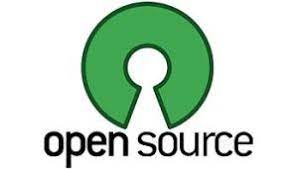

Nowadays, Everyone has a Google Pay account that can send money to anyone with a Phone Pe account because both use the same Unified Payments Interface or UPI platform. A similar experiment is being planned by the government in the e-commerce space, which is currently controlled by Amazon and Flipkart. The Open Network for Digital Ecommerce, or ONDC, aims to level the playing field for small merchants as well.
According to proponents, ONDC will shift Indian e-commerce away from the current platform-centric model influenced by market leaders Amazon and Flipkart and toward an open network. It will accomplish this by making several operational aspects open source, including seller recruitment and selection process, vendor exploration, market pricing, and product indexing. As a result, more traditional retailers will be able to enjoy selling their wares online and compete with large e-commerce firms.
ONDC is cover everything from clothing to food delivery to mobility. According to what we know so far, the ONDC will imply the establishment of a separate digital platform with simplified processes for onboarding sellers. If a buyer is looking for a white shirt, they will find it on Amazon and Flipkart. They will also be able to find the white shirt in local shops in their area.
The Department for the Promotion of Industry and Internal Trade (DPIIT) has issued orders establishing an advisory committee for its Open Network for Digital Commerce (ONDC) project, which aims to reduce “digital monopolies.” This is a step toward making e-commerce processes open-source, resulting in a platform that can be utilized by all online retailers.
What is ONDC?

The Open Network for Digital Commerce (ONDC) is an open protocol-based network that will allow local commerce across segments such as transportation, grocery, food order, delivery, hotel booking, and travel, among several others, to be identified and involved by any network-enabled application.
Point of Focus
- The ONDC goal is to promote open networks built with open-sourced methods, open specifications, and open network protocols that are platform-independent.
- The Quality Council of India has been tasked with integrating e-commerce platforms via a network based on open source technology.
- The implementation of ONDC, which is expected to be similar to the Unified Payments Interface (UPI), could bring various operational aspects implemented by e-commerce platforms to the same level. Various operational aspects include seller onboarding, distributor exploration, market pricing, and product cataloging, among several others.
- Buyers and sellers can transact on ONDC in spite of whether they are affiliated with a specific e-commerce portal.
Meaning of Open-Source

Making a software or a process open-source means that the code or the steps of that process is made available for others to use, redistribute and modify it. For example, while the operating system of Apple’s iPhones (iOS) is closed source, meaning it cannot be legally modified or reverse engineered, Google’s Android operating system is open-source, and therefore it is possible for smartphone manufacturers such as Samsung, Xiaomi, OnePlus, etc to modify it for their hardware.
What does the ONDC aim to achieve?
The Unified Payment Interface (UPI)causes problems in the world of digital payments. ONDC aspires to accomplish something similar in the field of e-commerce. It seeks to “decentralize” digital commerce by shifting it away from platform-centric models such as Amazon and Flipkart and toward an open network. ONDC may make it possible for more sellers to be digitally visible. The transactions will be carried out over an open network. According to insiders, the system may empower merchants and consumers by breaking down the current communication gaps. It will eventually affect every industry, from retail and food to transportation.
How does it work?
The concept of an ONDC was first proposed in 2020, with the goal of standardizing and streamlining the country’s e-commerce industry. When a project is made open-source, it becomes available for others to use and redistribute. Consumers can log in and search for products or services, and depending on their location, they will be able to access a list of sellers, as well as product details and prices. Payment gateways will be supported, and delivery and logistics services will be provided.
Sellers will be onboarded through open networks once mandated, and marketplaces such as Amazon and Flipkart will be required to register on the ONDC platform.
The task of project implementation has been assigned to the Quality Council of India (QCI), which maintains and operates the National Accreditation Structure for conformity assessment bodies and provides certification in education, health, and quality promotion.
Advisory council of ONDC
On July 5, the Centre established the ONDC advisory council. It now serves as a guide and mentor in the configuration, implementation, and national rollout of ONDC.
The nine members of the advisory council include Nandan Nilekani from Infosys, National Health Authority Chief Executive Officer R S Sharma, QCI Chairman Adil Zainulbhai, Avaana Capital Founder Anjali Bansal, and Digital India Foundation Co-Founder Arvind Gupta.
Significance of ONDC
- If the ONDC is incorporated and mandated, all e-commerce companies will be required to use the same processes (like Android Based Mobile Devices).
- This could provide a significant boost to smaller online retailers and newcomers.
If mandated, this could cause a challenge for larger e-commerce firms, which have their own processes and technology in place for these segments of operations.
- ONDC is expected to digitize the entire value chain, standardize operations, encourage supplier inclusion, improve logistics efficiency, and increase consumer value.
What are the benefits of ONDC?
The following advantages of ONDC are highlighted in the strategy paper:
For the benefit of the sellers:
- Getting access to more buyers
- Product accessibility and affordability have improved.
- Autonomy on terms as a result of multiple options for being digitally visible
- Reduced transactional costs
- More value chain services, such as logistics and fulfillment, are available.
For the benefit of the Buyers:
- Access to more sellers, and thus more options
- Availability to hyper-local retailers allows for better service and delivery times.
- A more positive customer experience
For benefit of technology platforms:
- New opportunities for start-ups to drive innovation in various parts of the network
- Access to the growth of digital commerce through buyer and seller side applications
- Reduced time-to-market and time-to-scale
- Focus on niche aspects leaving other partners to focus on different aspects
What are the problems with ONDC?
- New sellers have a Limited ability to compete: Digital marketplaces have evolved into large integrated solutions that connect the seller to the buyer while also providing integrated services such as warehousing, transportation, payment, and so on through a single service provider. The rapid growth of these platforms has limited the competitiveness of new sellers entering the market unless they are part of an established end-to-end service provider. While more platforms can and do emerge, the level of investment required to establish such integrated solutions limits the number of players, the paper explains. While the paper does not mention Amazon or Flipkart, the government has stated on numerous occasions that one of ONDC’s goals is to limit the dominant position of large, foreign-owned e-commerce companies.
- Concentration risk gives platforms excessive power: The growing size of the platforms also raises a concentration risk. Even if it is a government-run platform, consolidating most digital commerce trade on a single platform increases risk and creates a single point of failure. With that concentration of faculty, the freedom of exclusion and discretionary behavior also start to set in. As a result, the platforms become operators within the market, and small and medium businesses lose the choice and freedom to participate at their own will or terms, the paper explains, referring to the rules that large platforms such as Amazon and Flipkart unilaterally set.
- No portability of trust: Platforms enable sellers to build a reputation, which has significant value, but the seller cannot port this hard-earned reputation or credibility to another platform or its own application, even though the fact that it is the sellers’ own data and credentials, according to the paper. As a result, this model of value creation and exchange transforms platforms into a major store or keeper of value, tying sellers to a specific system. According to the paper, the store of value paradigm has had an impact on the large, unhindered, free-to-scale flow of value that a fair and efficient market should have.
- Sellers who want to sell on multiple platforms will find it difficult: If sellers want to sell on multiple platforms, they must maintain separate infrastructure and processes because each platform has its own set of policies and procedures. According to the paper, it raises the cost of sellers and limits participation. Besides that, the buyer and seller must be on the same platform in order to find each other. According to the paper, such gaps limit choice and discoverability within the fragmented collection of platforms.
ONDC Network Services
The common network services allow network participants to transact on the network.
- Registry: Application that maintains the list of participants who join ONDC.
- Network policies: These are the rules and code of conduct for various activities that are performed by the network participants and will cover areas like registration, transaction, payment, data transmission, etc. ONDC will adopt a minimalistic and non-restrictive policy framework to promote transparent, inclusive, and sustainable practices on the network, the paper states.
- Data privacy policies: The data policy will be compliant with the Information Technology Act 2000 and there will be efforts to comply with the emerging Personal Data Protection Bill, as well as the paper states. The paper lays out the following measures to ensure data privacy, but they are vague and broadly worded statements that need to be further elaborated on before any data sharing takes place:
- Transaction data will reside only with the buyer and seller applications and will not be visible to ONDC. ONDC will not be storing or viewing transaction data.
- Policies around the exchange of this data will evolve and would be consent-based and bound by the limitation of purpose.
- ONDC will ensure data security and credibility at the transaction level.
- User’s Personally Identifiable Information (PII), as well as seller data critical to trade such as competitive data, will be protected from third-party access.



